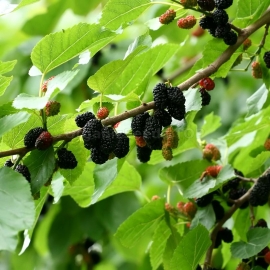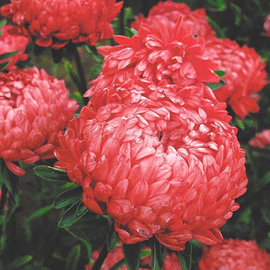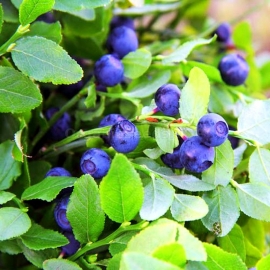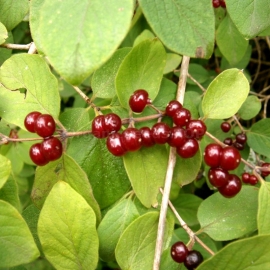



Black Mulberry Seeds (Morus Nigra)
1.14 €
The Black Mulberry is a medium sized deciduous tree usually only to 20 to 30 feet, but can reach 70 feet. Trees are known to be very long lived and can bear fruit for several hundred years. Mulberry trees are either dioecious or monoecious.
-
Black Mulberry / Morus Nigra
The Black Mulberry is an ornamental as well as a fruit bearing tree. It has a crooked, wide-spreading habit; dark red, purple, or black fruit, at 1", the largest of the genus.
The Black Mulberry is a medium sized deciduous tree usually only to 20 to 30 feet, but can reach 70 feet. Trees are known to be very long lived and can bear fruit for several hundred years. Mulberry trees are either dioecious or monoecious, and sometimes will change from one sex to another. The flowers are held on short, green, pendulous, nondescript catkins that appear in the axils of the current season's growth and on spurs on older wood. They are wind pollinated and some cultivars will set fruit without any pollination.
Cross-pollination is not necessary. Mulberries prefer deep, rich soils, but they will tolerate thin gravelly soil, rocky slopes, dry sites and other difficult areas, such as wet or alkaline soils. For this reason, they can be used for erosion control. They produce reliably in frost pockets and exposed areas. Mulberries need full sun, but otherwise, are one of the least "fussy" of the fruit trees.
Although they appear so, fruits are not true berries but an aggregate. The berry-like fruit have a unique tart-sweet taste. The black mulberry is generally considered the best tasting of the various mulberry species. The berries can be eaten out of hand or used in any way that other berries are used, such as in pies, tarts, puddings or sweetened and pureed as a sauce.
Slightly unripe fruits are best for making pies and tarts. Mulberries blend well with other fruits, especially pears and apples. They can also be made into wine and make an excellent dried fruit, especially the black varieties. Birds are also attracted to the fruits in large numbers; in fact, some people plant mulberries near their cherry trees, since the birds are reputed to enjoy the mulberries even more.
Products Viewed Before
Product code: 2323
1.14 €
Also known as Summer Lilac, it is a butterfly-attracting, aromatic bush that has narrow branches supporting lilac-like clusters of blossoms. You might even attract a hummingbird or two to this sweet-scented perennial bush.
Product code: 1301
1.14 €
An annual plant, a columnar bush, 50-70 cm high, slightly leafy flower stalks, 35-50 cm long, double inflorescences, 8-12 cm in diameter, red.
Product code: 745
1.39 €
You do not have to start your blueberries from cuttings or nursery shrubs. For the patient gardener, though, growing blueberry shrubs from seed can give you excellent results.
Product code: 3699
1.14 €
Five-petalled white flowers, resembling big white bluebottle flies, bloom in June on this unusual, rarely-seen, much-branched shrub which grows most commonly in lush woods on slopes, and around fields, and was being cultivated in Britain by 1683.




